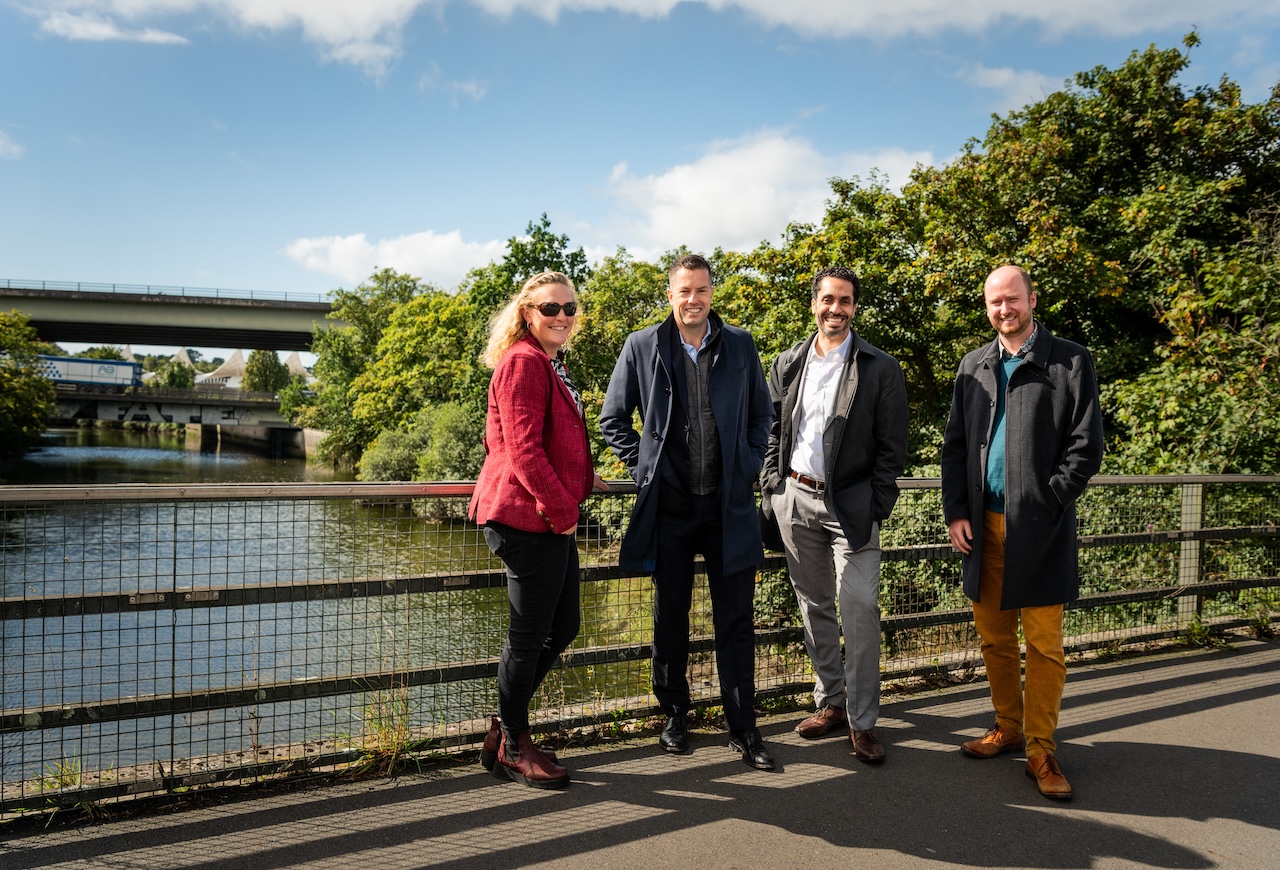UK impact investor Rob Gardner hopes to revolutionise investing in nature-based solutions with his latest fund management venture, Rebalance Earth.

Rebalance Earth (RE), a UK-based fund manager co-founded by Rob Gardner, has attracted seed capital from West Yorkshire Pension Fund (WYPF) to help establish its first fund, which is focused on support for land and sea restoration to mitigate environmental risks such as flooding. The fund aims to attract £150m (€178m) of investment by its launch, planned for early 2025, mainly from pension funds.
WYPF, which is part of the £60bn-plus Northern Local Government Pension Scheme (LGPS) pool with Greater Manchester Pension Fund and Merseyside Pension Fund, has provided more than £5m of seed capital to help establish the fund manager. It is also expected to be a significant investor in the fund, which is known as RE(Darwin) – short for ‘Rebalance Earth Delivering Adaptation, Resilience, Water Infrastructure through Nature’.
The fund will invest in nature-based solutions for “business-critical” infrastructure targeting five problem areas: flooding, drought, water quality, biodiversity and ecosystem health and carbon emissions. It will initially focus on investment in the UK, but it is seeking investment from a wide range of sources, including continental European investors interested in investing in nature restoration in developed markets such as the UK.
The fund is the latest in a series of impact-related ventures to be launched by Gardner, RE’s CEO. He is a pioneer of impact-related investing in the UK, whose track record includes co-founding investment consultancies Redington and mallowstreet, both B Corps. He also co-founded RedSTART, a financial education charity that delivers lessons to UK primary school children across the UK. When he was investment director at St. James’s Place (SJP), Gardner launched a £14bn global equity fund, at the time the largest aligned with Paris climate agreement goals.

Gardner told Impact Investor he was motivated to establish the new fund during the COP26 climate summit in 2021 when he learned a glacier he used to work on as a glaciologist when studying at university had all but disappeared, bringing home the scale of climate change impact. At that point, he decided to quit his job at SJP and “go all in” with Rebalance Earth.
The fund aims to tap the growing belief among pension funds that green investment is a sound long-term proposition, capable of generating adequate returns, while also combatting threats to their portfolios from environmental and social impacts resulting from climate change.
“We’re making the case that pension funds should make a ‘2% strategic asset allocation to nature’ as an asset class, but you need a big enough market to do that. The UK’s carbon credits and Biodiversity Net Gain [BNG] markets are currently too small, and we need to create an investment opportunity set that is £100bn in size,” Gardner says.
Doing that requires an investment that delivers three things to pension funds, according to Gardner: a fund needs to generate an attractive rate of return – RE is targeting a 10% long term internal rate of return; the opportunity needs to be big enough to deploy capital at scale; and and it needs to drive change and deliver a positive environmental and social impact to create a world worth living in.
For Gardner, tackling the UK’s growing water problems is a good place to start, by offering an opportunity to ameliorate flooding that impacts businesses and homes, and improve access to reliable, clean water supply, through nature-based solutions.
Around 185,000 businesses in England and Wales are at risk of flooding, according to the UK’s Environment Agency, while water supply is struggling to keep up with demand. This requires heavy investment at a time when the national government, local authorities and water companies have severe spending restraints, so alternatives are being seriously considered.
Pilot project
RE is partnering with Plymouth City Council, a coastal city of over 250,000 residents in southwest England, to demonstrate the potential impact of their fund through a pilot scheme. Gardner says that the partnership would serve as a model that could be scaled and replicated across the UK.
Tackling climate change is a top priority for the council, which declared a climate emergency in March 2019 and committed to making Plymouth carbon neutral by 2030.
Gardner says that achieving this ambitious goal requires significant and transformative changes, particularly as the city has been increasingly affected by flooding due to climate change and land and water management shifts within the river catchment areas.
As part of the collaboration, RE is implementing nature-based solutions in these catchment areas to help mitigate flooding and enhance climate resilience. Initiatives like river restoration, peatland restoration, and riparian tree planting will absorb excess rainfall upstream, reducing the risk of flooding downstream in Plymouth’s more densely populated areas. The project also aims to secure cleaner water supplies for the city.
As part of a new memorandum of understanding with Plymouth council, Rebalance Earth will initially collaborate with a council-owned ‘habitat bank’ to design and fund investible propositions. Habitat banks hold areas of land where measures to increase biodiversity are taking place, which developers can invest in to offset their environmental impact. Since January 2024, UK planning laws have required all large developments to invest in at least 10% BNG on construction.
RE’s growth strategy involves partnerships with local authorities and large companies and organisations whose operations are vulnerable to environmental risks like flooding.
The fund will finance the restoration of river catchments. Companies would receive nature-based flood protection solutions, offering an alternative to costly relocation of their operations, rising insurance costs, or having to rely solely on traditional engineered flood defences. In return, companies benefitting from the increased resilience would pay an annual premium—similar to an insurance policy—which would generate financial returns for the fund’s investors.
“We’re offering a reduction in flood risk, and a way to help safeguard our critical assets such as factories, retail locations, transport infrastructure like roads and railways, and other valuable resources,” Gardner says.
These “nature-as-a-service” contracts would generate revenue similar to lease agreements for property portfolios, offering a stable, long-term income stream to the fund’s investors. He says this model is particularly attractive to pension funds and other investors with long-term horizons looking for impact investments that address systemic risks such as climate change and nature loss.
While core revenues would come from these “nature-as-a-service” contracts, added income could also be generated by the generation of carbon credits and BNG units through restoration of peatland and tree planting, he explains. The strategy also supports regenerative, pesticide-free agriculture to improve soil health, boost carbon and water retention capacities, and enhance biodiversity.
Seagrass regeneration
RE hopes to develop similarly structured projects elsewhere in the UK soon, based around its five core themes of flooding, drought, water quality, biodiversity and carbon emissions.
One innovative area the fund is looking at is restoration of nature in the waters off the UK’s extensive coastline, recovering lost underwater habitats, such as oyster reefs, kelp forests, and seagrass meadows. Gardner says he envisions allocating 10-15% of the fund towards these restoration efforts, which play a vital role in biodiversity, carbon sequestration and coastal resilience.
“There’s significant nature depletion happening beneath our seas. We’ve lost 90% of our seagrass, so we’re exploring ways to restore both seagrass and kelp,” Gardner comments. “These marine plants sequester carbon much faster than trees, offering a quicker financial and environmental return.”
Seagrass also has a role as a fish nursery. According to Gardner, its restoration could help replenish depleted fish stocks and enhance biodiversity, while also contributing to the role of healthy underwater ecosystems in mitigating the impact of storm surges along the coast.





